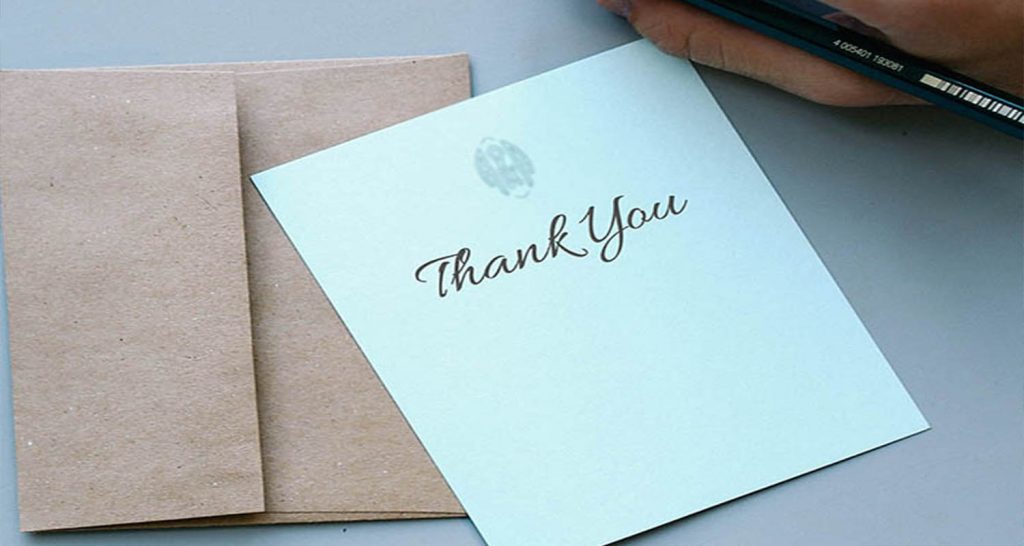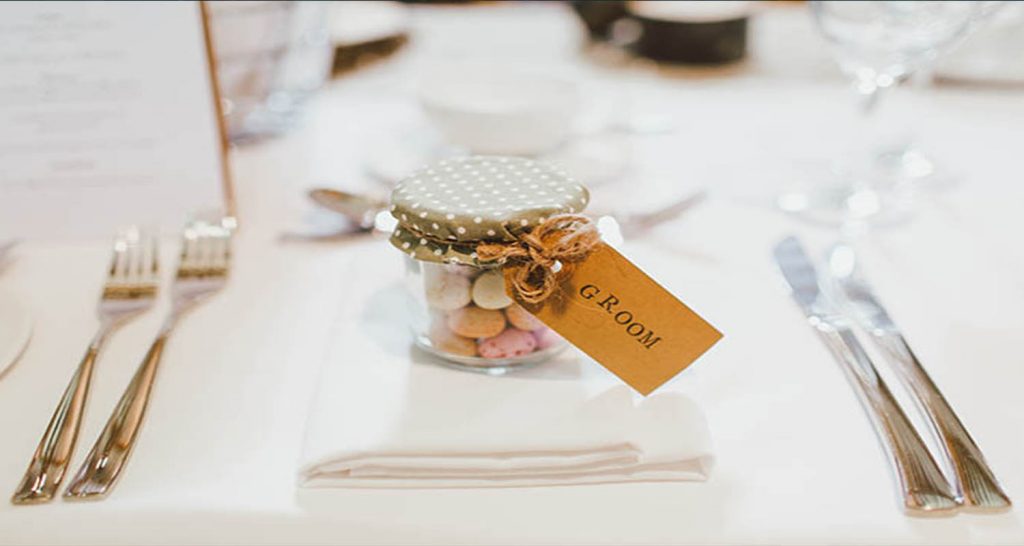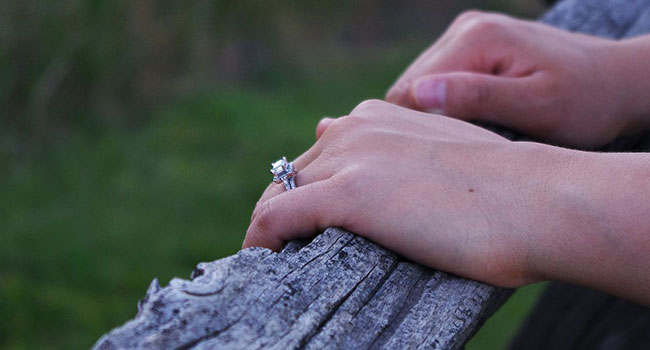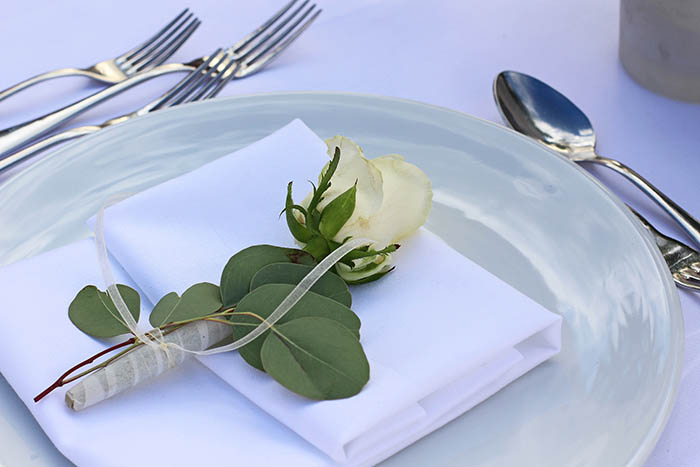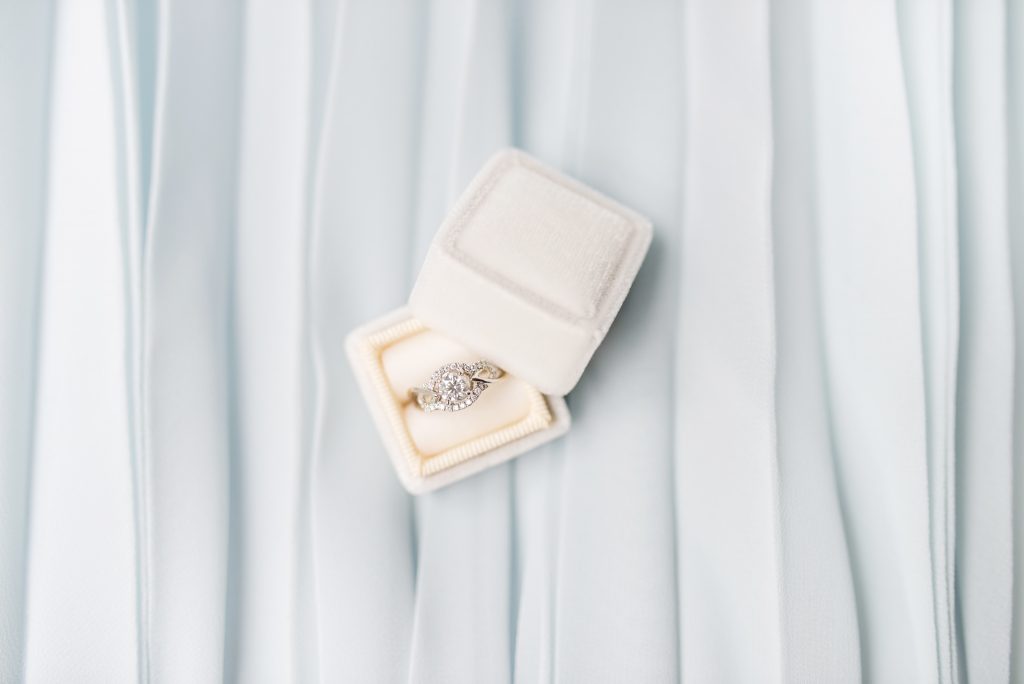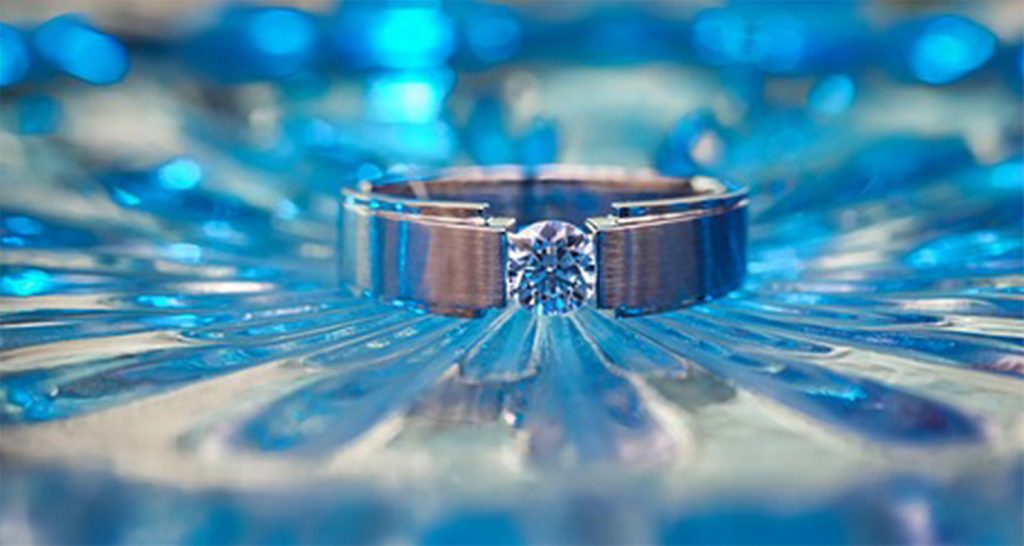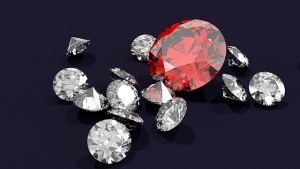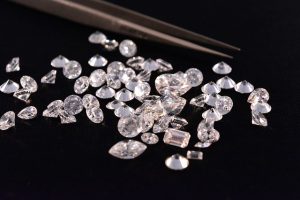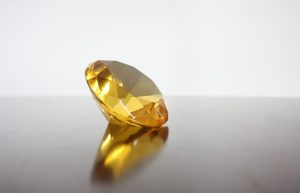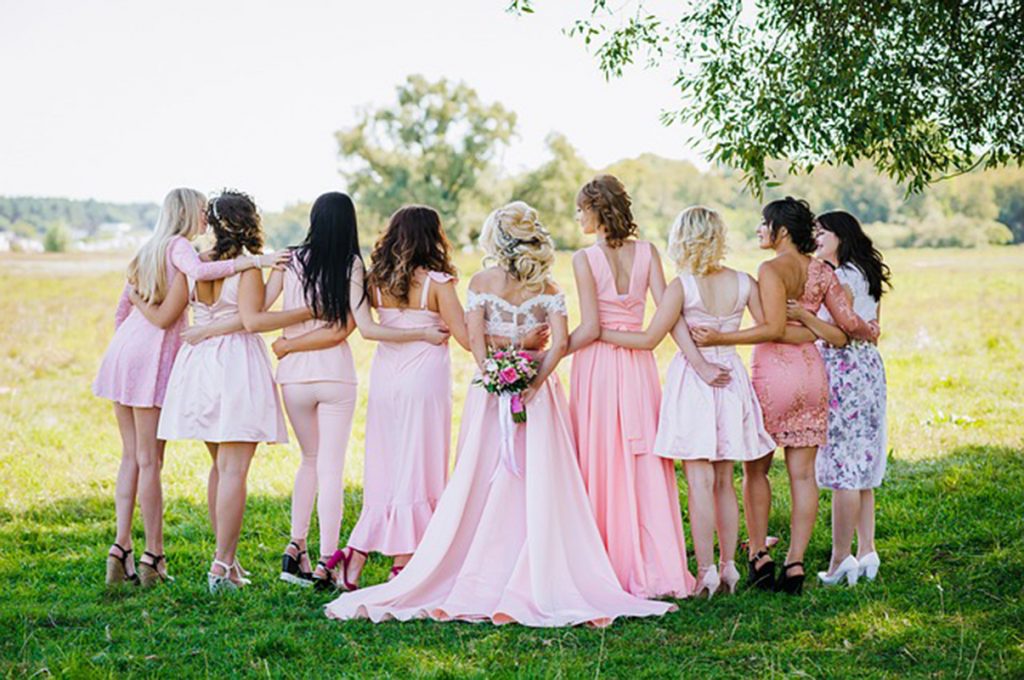There are many popular diamond shapes to choose from when it comes to engagement rings. The top ten are: round, princess, oval, marquise, pear, cushion, emerald, asscher, radiant and heart.
The shape of the diamond refers the basic outline when viewed face up. The cut of a diamond refers to how the diamond’s facets are arranged and its ability to reflect light. The most common cutting style is brilliant (cut with 57 or 58 facets to maximise sparkle) and then there is also the step cut which is generally used when cutting square and rectangular shapes (used for cutting emerald and asscher shapes).
Considering the 4 C’s and your budget when deciding on a shape is important but what it really comes down to is personal preference and each shape has its own charm.
Round
A round shaped diamond is the most popular choice for an engagement ring as it looks good on most hands and in most settings. Almost all round diamonds are cut brilliant which maximises the potential brightness. However, due to the high demand of this shape, the cost per carat is higher than other shapes.
Princess
This shape is also very popular due to the fact that it has a unique shape and has a slightly lower price per carat than the round shape. It also works in most ring setting styles, although it should be set with 4 prongs to protect all four corners. A brilliant cut princess diamond rivals the brilliant round because it offers that sparkle at a lower price. Its square shape also easily disguises imperfections meaning that you can choose pretty much any carat size.
Oval
This shape is becoming more popular and it is an adaptation of the brilliant cut round shape so it is perfect for those who like the sparkle of the round but want something a bit more unique. The elongated shape creates the illusion of a larger size and makes the finger appear longer and slimmer. It is also flexible in terms of setting styles and hides small imperfections.
Marquise
This long and narrow shape has one of the largest surface areas in the upper part of the diamond of all the shapes. It makes the size appear larger than it is and makes the finger seem longer and slimmer, like the oval. Symmetry is important when cutting this shape as the two end points should align and the right and left sides should form a mirror image. It should be set with 2 prongs to protect the two points.
Pear
This shape is a combination of the round and marquise shapes with a tapered point on the one end. It also has the lengthening and slimming effect on the finger due to its asymmetry. It is feminine, unique and elegant. This shape also needs to be symmetrical and set with a prong at the point for protection. You can decide which direction you would like the point to face but positioning the point to face the fingernails is more flattering on the hand.
Cushion
Cushion cut is a square shape with rounded corners. This style shows clarity (imperfections) well which is something to take into consideration when deciding which of the 4 c’s is most important to you – high clarity in this case. This shape works well in vintage settings.
Emerald
This shape was originally for cutting emeralds, hence the name. Due to the way it’s cut, it produces a hall of mirrors effect rather than the sparkle that comes with brilliant cuts. It also emphasises the symmetry that comes with this shape. It is flattering on the hand and the long lines and flashes of light that come with this shape bring a sense of elegance. It is not such a common choice for an engagement ring meaning that you can find more affordable options in higher quality than other shapes. However, this shape does not hide imperfections as well as shapes that are cut brilliant.
Asscher
This shape has an antique feel to it and is similar to the square emerald but with larger facets. The more facets, the more sparkle. But like the emerald and because of the open and square cut corners, it does not hide imperfections well and so a high clarity is necessary.
Radiant
This shape is the first square shape to be cut brilliant, the second being princess. A square radiant shape is similar to princess but with cropped corners. It will often look the same as princess if it is set with four prongs covering each corner. A rectangular radiant shape is perfect for those who like the look of the emerald shape but want the shine that comes with the brilliant cut. Clarity is less of a concern with this shape as the many facets hide imperfections.
Heart
This shape is a classic symbol of love but carat weight is important as the shape is difficult to achieve in diamonds smaller than 0.50 carats. Symmetry is also important in this shape. The irregular shape of a heart cut means it will need to be set with more prongs to protect the stone. The many facets that come with the cutting of this shape will ensure a lot of sparkle.
Now that you know what each shape has to offer, you need to decide what is most important within your budget – size or quality?
If size is important to you but you are on a budget, you should consider a shape that appears larger than the carat weight indicates, such as the emerald and marquise.
If having a very sparkly ring is important, you should choose a shape that is cut brilliant rather than step.
If clarity is important to you but you are on a budget, choose a shape that has many facets (like round and princess) because the facets help to hide imperfections.
It is recommended to narrow your choice down to two shape options and then try on the rings that are available to you within your budget to see what you love most.
Image: Unsplash



